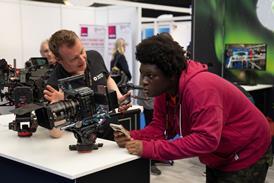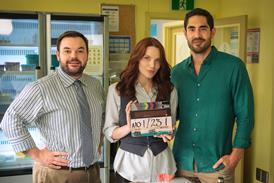John Pilger’s latest documentary required a post production set-up that could cope with vast amounts of archive footage, says Andy Nicholson.
Utopia, by Bafta, Emmy and RTS award-winning journalist John Pilger is a film that explores Australia’s relationship with its indigenous people.
Utopia is also the name of a vast region in northern Australia, which is home to the oldest human presence on earth.
The film is a journey into that secret country which details not only the uniqueness of the first Australians but their betrayal and resistance.
We began our work on Utopia when editor Joe Frost introduced producer and director John Pilger and co-director Alan Lowery and his team to us, as a result of his previous experiences at Directors Cut.
Mark Manning, our managing director, approached me with a brief which focussed primarily on enabling John and the Dartmouth Films team to be able to translate extensive footage shot primarily on Sony XDCam disc in to a film that would effectively communicate an accurate account of Aboriginal history in Australia.
We were of course delighted to be asked to work on the film, though slightly nervous given the magnitude and complexity of media involved.
I was involved from the outset and drew up the roadmap for the project, designing a workflow that could logically and creatively assist with John’s work style and intentions, provide support where necessary and boost time and cost savings.
Utopia is both a personal journey for John and Australia and a universal story of power and resistance, and we kept the magnitude of the project front of mind.
The edit involved huge amounts of archive material of all formats since Utopia draws on people and places John filmed up to twenty eight years ago during his long association with the indigenous people of his homeland.
It was essential to establish clear and effective workflows to allow maximum creative freedom, while eliminating any nasty surprises at the conform stage.
This was pror to the installation of our Avid Interplay system, so a lot of the preparation was done both pre-edit and during the edit as the material began to slot together.
Equally, we drew from an extensive use of carefully chosen archive, to build the historical elements of the film which was incredibly important in order to accurately represent historical facts juxtaposed with the press at the time.
The ingest started from various formats and we were up and running in September last year. The project was then managed on a day to day basic by Charlotte Hawkins, our post producer.
I was able to create a sympathetic Symphony online, negotiating the different frame rates and frame sizes, and picture post was completed in three days.
The grade was the big challenge, combining the rich desert colours of Western Australia with an almost infinite variety of archive material.
Using the Nucoda Film Master’s restoration tools colourist Andy Elliott was able to bring to life the old material, the end result being a rich and magnetic visual experience complementing the mood of the narrative in just over three days.
Head of sound Kate Davies led the sound team, which worked closely with Joe during the edit to ensure that the huge range of geographical atmospheres were accurately realised and integrated within the mix.
Making extensive use of restoration tools in the track lay the team were able to clean up much of the archive sound before the mix, which then took 20 hours.
This gave Joe the confidence that the material could be used in the film to add real voices to the powerful soundscape.
Final post was completed in September this year.
As a post-production exercise it couldn’t have been smoother, the end result being a film we’re all proud to be part of and, having made friends with the team over the year we shall hopefully see them back again soon on their next project.
Andy Nicholson is technical director at Directors Cut
- Utopia is on ITV, 10.35pm, Thursday 19 December.




























No comments yet